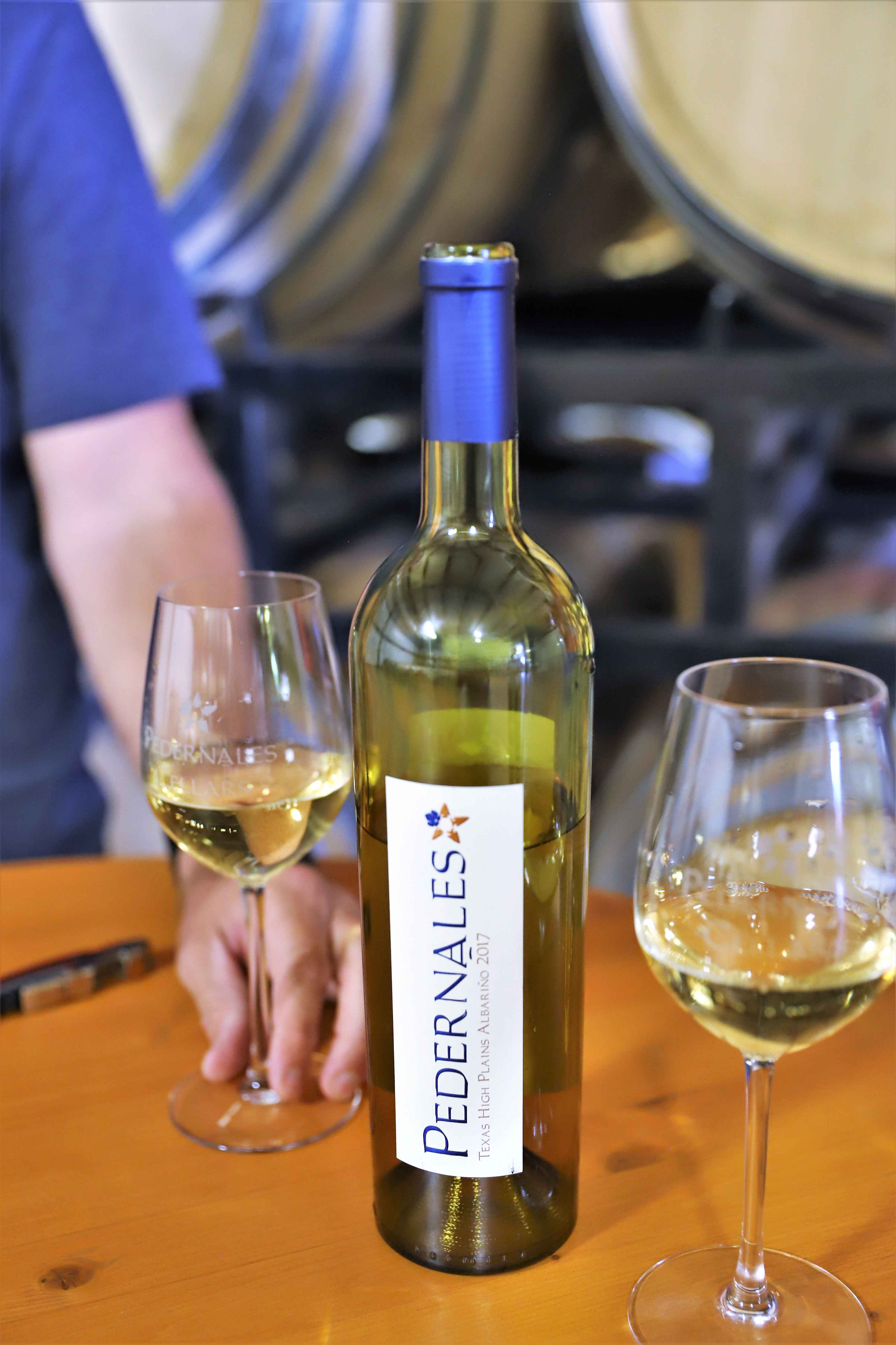All About Albariño, a Winemaker’s Q&A with Joanna Wilczoch
Crisp, aromatic, expressive of terroir – all those are qualities that Pedernales Cellars looks for in a quality white wine. At Pedernales we take pride in working with grape varietals that are not only expressive of terroir, but also bring other unique qualities to the palate too. With that philosophy in mind, we proudly debut the 2017 Texas High Plains Albariño. Winemaker Joanna Wilczoch answers a few questions about the latest release and what makes it a stand-out in our portfolio.
What are your favorite qualities of Albariño?
I appreciate the lean, racy style of Albariño. What does that mean? We picked the grapes at a lower brix (a measure of the sugar level in the grape), resulting in a nice crisp wine with a lot of finesse, and aromatics of dried lemon and almond pith. It has a hint of salinity that is typical to the salinity we get from Albariño grown in proximity to the ocean in Spain.
What are some of Albariño’s physical traits that make it unique?
The growth patterns of Albariño make it relatively easy to manage in the vineyard. It wants to grow pretty much vertical, and it is not super vigorous so it’s easier for us to manage compared to some of the other grape varieties we grow. Because it’s not particularly vigorous, the leaves also don’t get in the way of sunlight ripening the fruit. The relatively thin canopy also allows for good ventilation, allowing the grapes to dry out well after rain. This helps mitigate the potential for disease and rotting in the clusters. The grape clusters are pretty different from other whites – they tend to resemble little grape grenades. They are small, tight clusters and easy to identify.
What are some of the terroir characteristics the grapes express in the finished wine?
The Albariño from Pedernales Cellars’ estate Kuhlken Vineyards in the Hill Country are grown in a combination of limestone-rich and sandy loam soils which give the wine a great minerality. The soil in Bingham Vineyards and Newsom Vineyards, where we source much of our Albariño, is red sandy loam. Compared to the Hill Country based fruit, I find the wine made with these high plains grapes to be a little rounder in mouthfeel with added complexity. While it still has some of that characteristic salinity, it doesn’t have as much minerality as the estate block.
How is this vintage different from others?
There are three key differences that make the 2017 vintage unique:
- We selected Albariño grapes from three vineyards for this vintage: Kuhlken Vineyards, Bingham Family Vineyards, and Newsom Vineyards in the High Plains. This is the only year we have used fruit from the Newsom Vineyards in our Albariño.
- In addition, we fully barrel fermented the estate portion of this lot to add a layer of complexity, which is a first for our Albariño.
- The winemaking team also chose to blend in a small portion of Viognier to boost the floral notes. The result is a fairly complex vintage.
What do you look for when harvesting/selecting your Albariño?
When making harvest decisions for Albariño, I am looking to maintain as much natural acidity as I can. So, my preference is to pick the grapes when the brix are still in the low 20’s. I’ve found that the fruit is often ready at this stage of ripening with plenty of plumpness, brown seeds, and soft skin.
What is the primary taste profile and how does it stand out to you?
Texas Albariño, for me, has some qualities of a California Chardonnay plus a little more salinity. I get lemon, but also pear, apple, and sometimes melon flavors.
It can have a fair bit of body and weight to the palate making it different from our Vermentino which tends to be a little more linear. It’s also not as floral as our Viognier. It stands out all on its own.
What was the winemaking process like?
We often press our white wines just hours after harvest in the High Plains to reduce skin contact. After the fruit is pressed, it gets “floated,” which is a method for removing solids from the juice (any small bits of skin, seeds, etc.) which can add unwanted flavors during fermentation. In a day or two we transport the juice to Pedernales Cellars’ winery where we move it into tanks or barrels to ferment.
The majority of the wine is fermented in stainless steel tanks, with a small portion fermented in oak barrels. The blending is completed after final fermentation. Generally, we don’t allow our Albariño to go through malolactic fermentation in order to maintain freshness and crispness, and to preserve the natural acidity that we seek out during harvest.
The goal with these steps is to create clean, crisp flavors that will allow the character of the fruit to shine through.
What are your food pairing recommendations?
The round body of Albariño lets it pair nicely with pork, fatty white fish, and chicken dishes. It also does well with creamier foods like pasta with a cream-based sauce or creamy soups.
If you are curious about how our grapes are grown, we will soon announce our socially distanced tour of our estate vineyards. Just as important as seeing the grapes in the vineyard, is tasting the final product. We are featuring our Albariño in our Summer Six-Pack for a special price of $89.00, and a discount on single bottles of Albariño as well.
Join our team for a Live Virtual Tasting at 5pm on Thursday, June 18. Our winery team will share further insights about this wine, and some of their favorite summer food pairings.